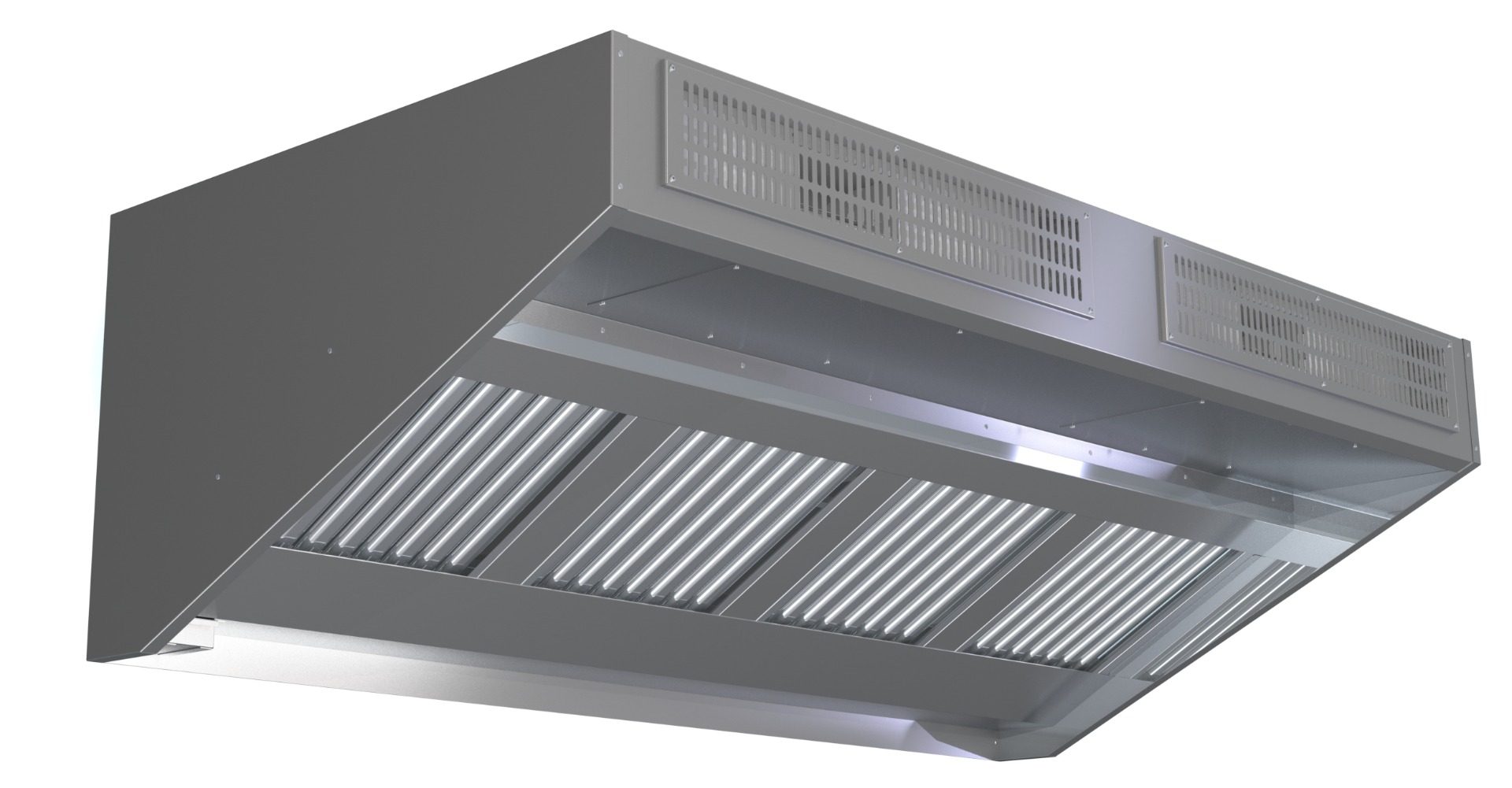
It might seem obvious, but the correct installation of commercial kitchen extraction can distinguish between a working kitchen and a successful, productive commercial kitchen.
To understand how vital commercial kitchen extraction is, it's worth taking a step back to look at the function of kitchen extraction and ventilation.
A busy kitchen produces a lot of heat, steam, grease and smoke - all of which need to be extracted from the room to create a safe and comfortable working environment. Commercial kitchen extraction aims to remove these contaminants from the air while providing adequate ventilation.
Commercial Kitchen Extraction - The Basics
There are four main commercial kitchen extraction system types: extraction canopies, baffle filters, condensate canopies, and filtration units. Canopies are the most common type of extraction system, and they work by drawing contaminated air up into the hood and through a ducting system where it is filtered and discharged outside.
Baffle filters are similar to canopies but have a series of baffles that help break up the airflow and grease before reaching the ducting system. Condensate canopies are designed for kitchens that produce a lot of condensation, and they work by collecting and draining away any condensation that builds up in the kitchen.
Filtration units are the most expensive extraction system, but they offer the best filtration and ventilation. Filtration units work by drawing contaminated air through a series of filters that remove contaminants from the air before it is discharged outside.

Catering Extraction - Regulations for Commercial Kitchens
Strict regulations surround commercial kitchen extraction and ventilation; you must be aware of these before you start planning your commercial kitchen.
Pay close attention to;
⦁ The Workplace (Health, Safety and Welfare) Regulations 1992, which states that employers must have ventilation in enclosed working areas
⦁ The Gas Safety (Installation and Use) Regulations 1998 which requires extraction or a flue interlocking system to be installed with any gas cooking appliance
⦁ The Health and Safety at Work etc. Act 1974 which requires employers to provide safe conditions for staff to work in.
The most important regulation to be aware of is the statutory requirement for all commercial kitchens to have an extractor fan with a minimum capacity of 60 cubic metres per hour.
This means that if your kitchen is smaller than 60 square metres, you will need an extractor fan that can cope with the volume of air in your kitchen.
The Importance of Correct Sizing When Buying Extraction
One of the most critical aspects of commercial kitchen extraction is getting the sizing correct. The extractor fan must cope with the volume of air in your kitchen, considering natural ventilation from windows and doors.
It is also essential to consider the type of cooking in your kitchen, as this will impact the grease and smoke produced.
It is always preferable to seek expert guidance from a certified assessor if you need clarification about the size of the extractor fan you need.
The Benefits of Commercial Kitchen Extraction
There are many benefits to having a correctly sized and installed commercial kitchen extraction system, including the following:
- Improved air quality: by removing contaminants from the air, commercial kitchen extraction can improve the air quality in your kitchen and make it a pleasant workplace. While most commercial kitchen extraction removes fumes, grease and smoke etc. from the air, there are some recirculating ventilation systems such as the Parry Air-In Titan Canopy that also introduce clean replacement air back into the kitchen after exhaust air has been removed. Read more about The Parry Air In Canopy - Revolutionising Restaurant Kitchen Extraction.

- Improved efficiency: by removing heat, steam and grease from the air, commercial kitchen extraction can improve the efficiency of your kitchen appliances.
- Reduced running costs: by removing heat from the air, commercial kitchen extraction can help to reduce the running costs of your air conditioning system and appliances such as fridges and freezers.
- Better overall working conditions: by improving the air quality and temperature in your kitchen, commercial kitchen extraction can create a more comfortable working environment for your staff.
Catering Kitchen Extraction - Top Tips
It's really not cost-effective to scrimp on extraction and ventilation in your kitchen. You can create a more efficient and comfortable working environment by meeting or exceeding the minimum requirements while reducing running costs. Here are some more valuable tips:
⦁ Use high-quality filters. Using lower-quality filters will mean they must be replaced more frequently, increasing costs in the long run.
⦁ Ensure ducting is the correct size - if it is too small, it will restrict airflow, and if the ducting is too big, it will cause excessive noise.
⦁ It's also important to regularly clean your commercial kitchen extraction system, not just for performance and efficiency but also from a hygiene and fire safety perspective.
How often you need to clean it will depend on the type of system you have, but as a general rule of thumb, grease filters should be cleaned every month, and you should clean ductwork every six months.
Other Simple Practices to Help Reduce Pressure on Commercial Kitchen Ventilation
As well as making sure your commercial kitchen extraction and ventilation system are up to scratch, there are several other simple practices you can implement to help reduce the pressure on your system.
Employ pan lids. When pan lids are left off, as much as 60% of heat can be lost. Additionally, lids on pans produce faster cooking outcomes and keep food hotter for longer.
Switch to induction cooking. All heat from induction hobs is delivered directly to the cooking pan; no heat or fumes are released.
When using microwaves, pick commercial models. While many chefs consider microwaves a handy add-on rather than the primary cooking method. There's little doubt that microwaves have their place in a commercial kitchen producing speedy results when reheating "wet" meals without producing much external heat.
By following these simple suggestions, you can help to reduce the pressure on your commercial kitchen extraction and ventilation system, making it more efficient and cost-effective in the long run.
FFD Catering Equipment stocks a range of commercial kitchen extraction and ventilation products, so if you're looking for a new extractor fan or need to upgrade your existing system, we can help. We also offer a free assessment service, so our experts can advise you if you're unsure which commercial ventilation system is most suitable for your kitchen.
